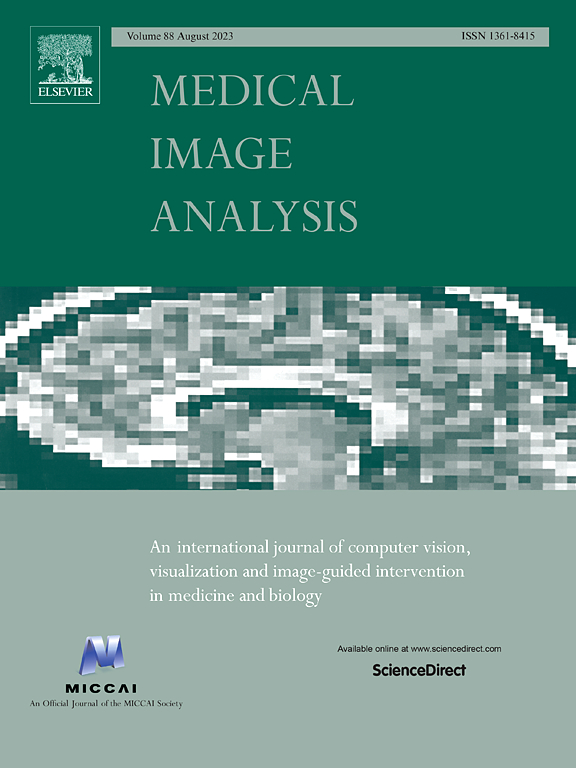Abductive multi-instance multi-label learning for periodontal disease classification with prior domain knowledge
IF 10.7
1区 医学
Q1 COMPUTER SCIENCE, ARTIFICIAL INTELLIGENCE
引用次数: 0
Abstract
Machine learning is widely used in dentistry nowadays, offering efficient solutions for diagnosing dental diseases, such as periodontitis and gingivitis. Most existing methods for diagnosing periodontal diseases follow a two-stage process. Initially, they detect and classify potential Regions of Interest (ROIs) and subsequently determine the labels of the whole images. However, unlike the recognition of natural images, the diagnosis of periodontal diseases relies significantly on pinpointing specific affected regions, which requires professional expertise that is not fully captured by existing models. To bridge this gap, we propose a novel ABductive Multi-Instance Multi-Label learning (AB-MIML) approach. In our approach, we treat entire intraoral images as “bags” and local patches as “instances”. By improving current multi-instance multi-label methods, AB-MIML seeks to establish a comprehensive many-to-many relationship to model the intricate correspondence among images, patches, and corresponding labels. Moreover, to harness the power of prior domain knowledge, AB-MIML converts the expertise of doctors and the structural information of images into a knowledge base and performs abductive reasoning to assist the classification and diagnosis process. Experiments unequivocally confirm the superior performance of our proposed method in diagnosing periodontal diseases compared to state-of-the-art approaches across various metrics. Moreover, our method proves invaluable in identifying critical areas correlated with the diagnosis process, aligning closely with determinations made by human doctors.
基于先验领域知识的牙周病分类的溯因多实例多标签学习
目前,机器学习在牙科领域得到了广泛的应用,为牙周炎、牙龈炎等口腔疾病的诊断提供了有效的解决方案。大多数现有的诊断牙周病的方法都遵循两个阶段的过程。首先,他们检测和分类潜在的兴趣区域(roi),随后确定整个图像的标签。然而,与自然图像的识别不同,牙周病的诊断在很大程度上依赖于精确定位特定的受影响区域,这需要专业知识,而现有模型无法完全捕获这些专业知识。为了弥补这一差距,我们提出了一种新的溯因多实例多标签学习(AB-MIML)方法。在我们的方法中,我们将整个口腔内图像视为“袋”,将局部斑块视为“实例”。通过改进现有的多实例多标签方法,AB-MIML寻求建立一种全面的多对多关系,以模拟图像、补丁和相应标签之间复杂的对应关系。此外,为了利用先验领域知识的力量,AB-MIML将医生的专业知识和图像的结构信息转换为知识库,并进行溯因推理以辅助分类和诊断过程。实验明确地证实了我们提出的方法在诊断牙周病方面的优越性能,与各种指标的最先进方法相比。此外,我们的方法在识别与诊断过程相关的关键区域方面被证明是无价的,与人类医生的决定密切相关。
本文章由计算机程序翻译,如有差异,请以英文原文为准。
求助全文
约1分钟内获得全文
求助全文
来源期刊

Medical image analysis
工程技术-工程:生物医学
CiteScore
22.10
自引率
6.40%
发文量
309
审稿时长
6.6 months
期刊介绍:
Medical Image Analysis serves as a platform for sharing new research findings in the realm of medical and biological image analysis, with a focus on applications of computer vision, virtual reality, and robotics to biomedical imaging challenges. The journal prioritizes the publication of high-quality, original papers contributing to the fundamental science of processing, analyzing, and utilizing medical and biological images. It welcomes approaches utilizing biomedical image datasets across all spatial scales, from molecular/cellular imaging to tissue/organ imaging.
 求助内容:
求助内容: 应助结果提醒方式:
应助结果提醒方式:


